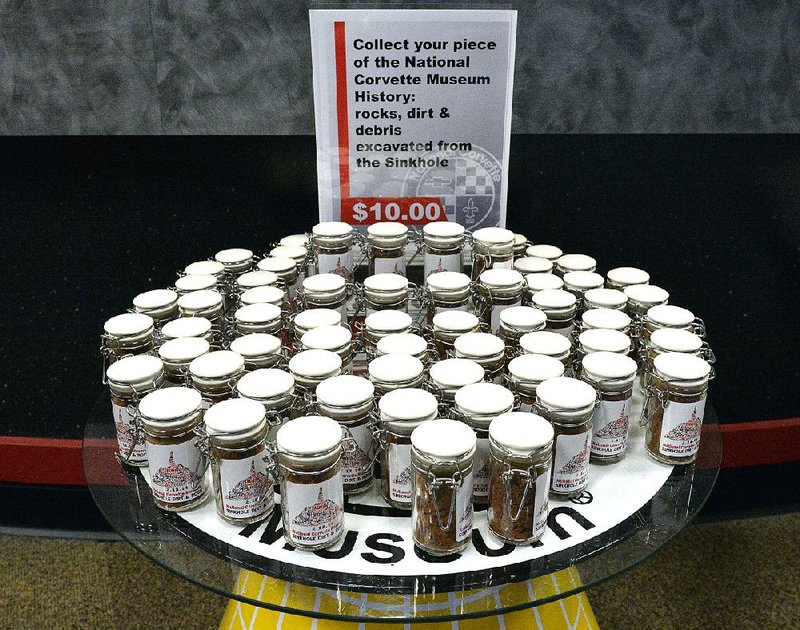BOWLING GREEN, Ky. — The car-swallowing hole has been fixed but not forgotten at the National Corvette Museum. Yellow tape now marks the boundaries of the cavity that became a sensation and put the museum on the map. Instead of a gaping sinkhole driving tourism, it’s the vintage sports cars crunched by rocks and dirt.
The pit that consumed eight prized sports cars in early 2014 has been filled; the repaired exhibit area has become a magnet for visitors, and the dirt-caked remains of the mangled cars are the stars.
Where the 60-foot-long, 45-foot-wide, 30-foot-deep sinkhole once drew gasps, now it’s the remains of the worst-damaged cars that get astonished looks.
“They look like they went through a tornado,” said Corvette owner Doug Kidd of Canton, Ohio.
Seven of the eight cars are back on display in about the same spot where they plunged to fame. Five were too beaten up for repairs. Two are fixed and another will be restored. The eight cars carried a value believed to exceed $1 million.
The museum’s Facebook followers exceed 200,000, compared to about 50,000 before the sinkhole. On social media, photos showcasing the damaged cars outpace those of the shiny, sleek models on display, said museum spokesman Katie Frassinelli.
In the gift shop, jars of sinkhole dirt and rocks fetch $10 apiece. More than 2,500 jars have been sold.
For museum officials, the trick is to keep the site’s popularity from going in reverse now that visitors can’t gawk at the sinkhole. The museum cashed in on the giant chasm with record attendance and revenue in 2014.
Last year, the museum just off Interstate 65 drew 251,258 visitors, easily topping the 150,462 visitors in 2013.
“We just want to try to do our best to make sure the decrease is as little as possible,” museum Executive Director Wendell Strode said.
Maintaining that momentum will be challenging, said Jason Swanson, a University of Kentucky assistant professor in hospitality management and tourism.
“The museum is better off since more people now know of the museum because of the sinkhole’s publicity,” Swanson said. “However, 10 years down the road, 2014 and 2015 will likely be seen as an anomaly.”
The museum is doing its part to keep the sinkhole etched as a curiosity.
A temporary exhibit shows the now-famous security camera footage of the floor’s collapse and cars toppling like toys into the pit. That footage has been viewed about 8.5 million times on YouTube, the museum said. The hole opened up when the museum was closed, and no one was injured.
Kidd said he wished at least part of the sinkhole had gone unplugged. It was an option discussed by museum leaders before they opted to fill it in.
The repairs began last fall and cost about $5 million, Frassinelli said. Insurance covered everything but the museum’s deductible. Donations picked up the deductible, she said.
Museum officials at first devastated by the chasm now have a much different attitude.
“We decided to embrace it,” Frassinelli said. “And what could have been a really big negative for the museum turned out to be a positive.”
